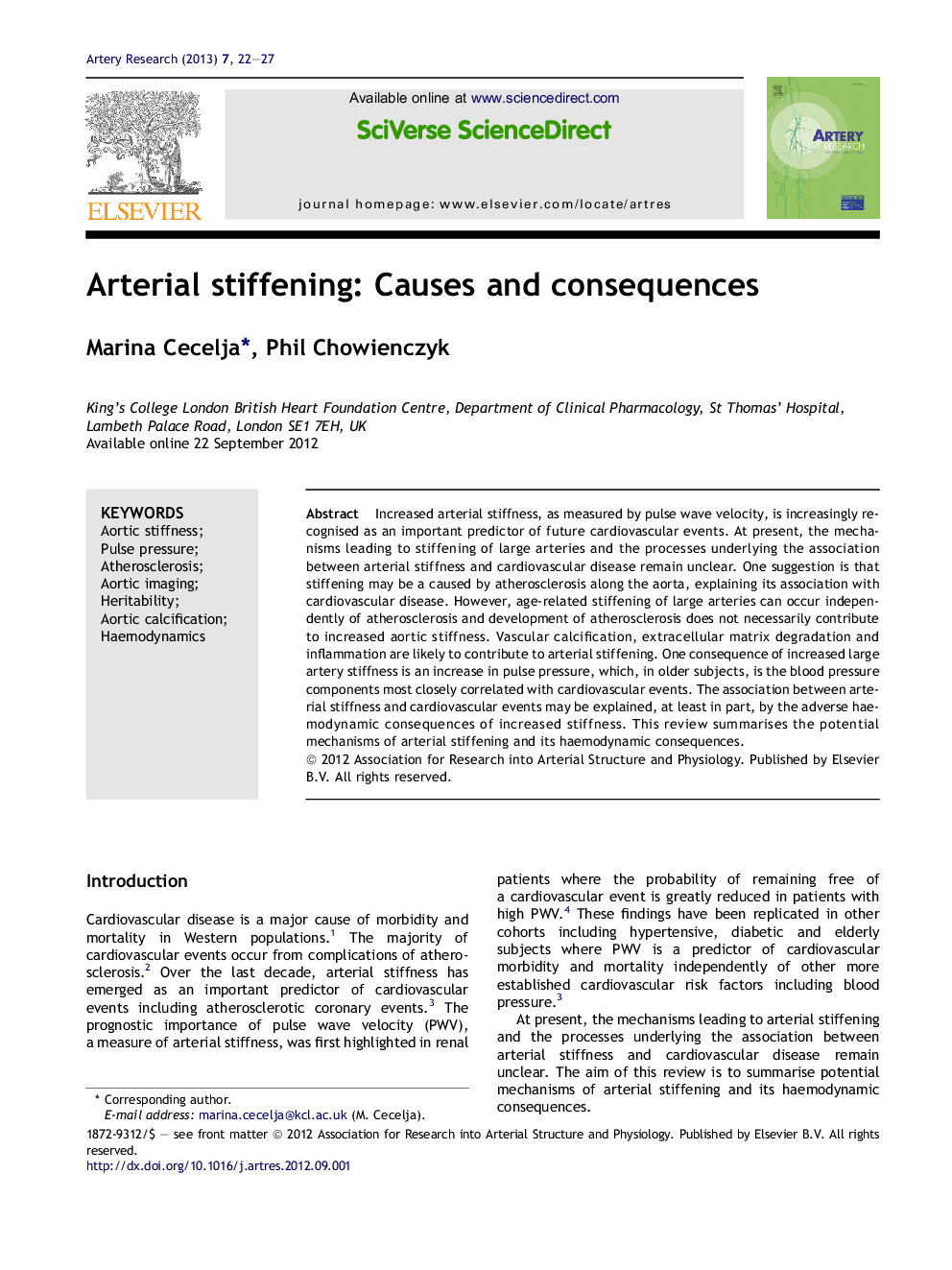| Article ID | Journal | Published Year | Pages | File Type |
|---|---|---|---|---|
| 2891742 | Artery Research | 2013 | 6 Pages |
Increased arterial stiffness, as measured by pulse wave velocity, is increasingly recognised as an important predictor of future cardiovascular events. At present, the mechanisms leading to stiffening of large arteries and the processes underlying the association between arterial stiffness and cardiovascular disease remain unclear. One suggestion is that stiffening may be a caused by atherosclerosis along the aorta, explaining its association with cardiovascular disease. However, age-related stiffening of large arteries can occur independently of atherosclerosis and development of atherosclerosis does not necessarily contribute to increased aortic stiffness. Vascular calcification, extracellular matrix degradation and inflammation are likely to contribute to arterial stiffening. One consequence of increased large artery stiffness is an increase in pulse pressure, which, in older subjects, is the blood pressure components most closely correlated with cardiovascular events. The association between arterial stiffness and cardiovascular events may be explained, at least in part, by the adverse haemodynamic consequences of increased stiffness. This review summarises the potential mechanisms of arterial stiffening and its haemodynamic consequences.
